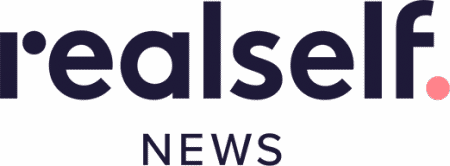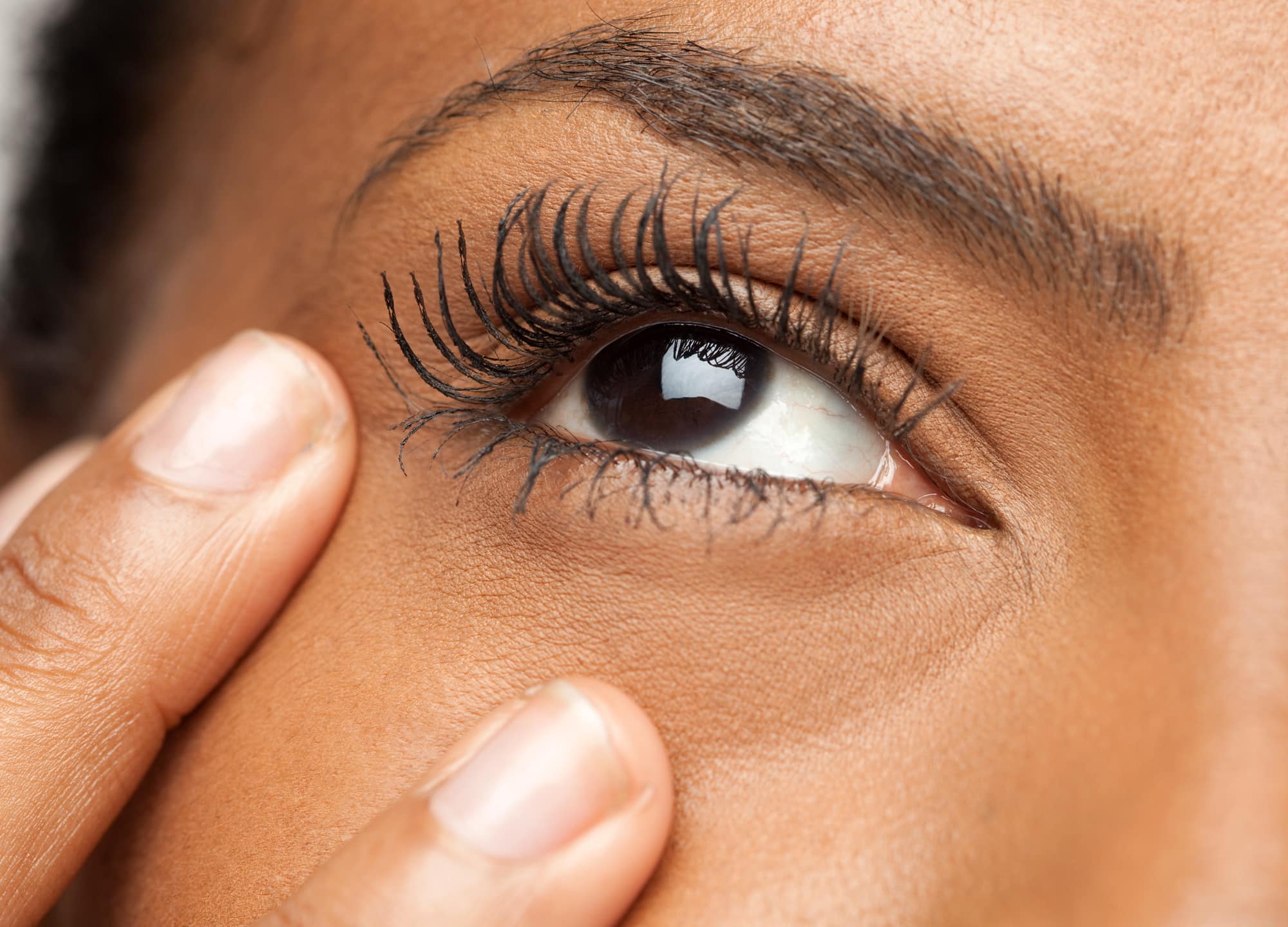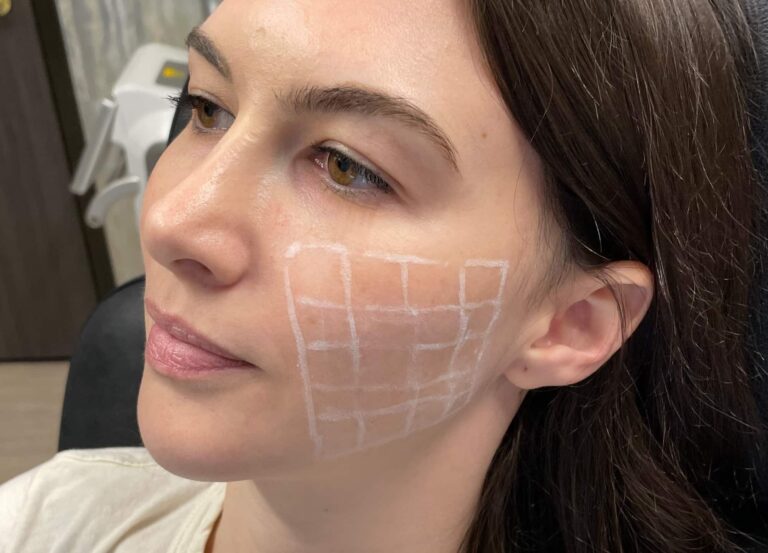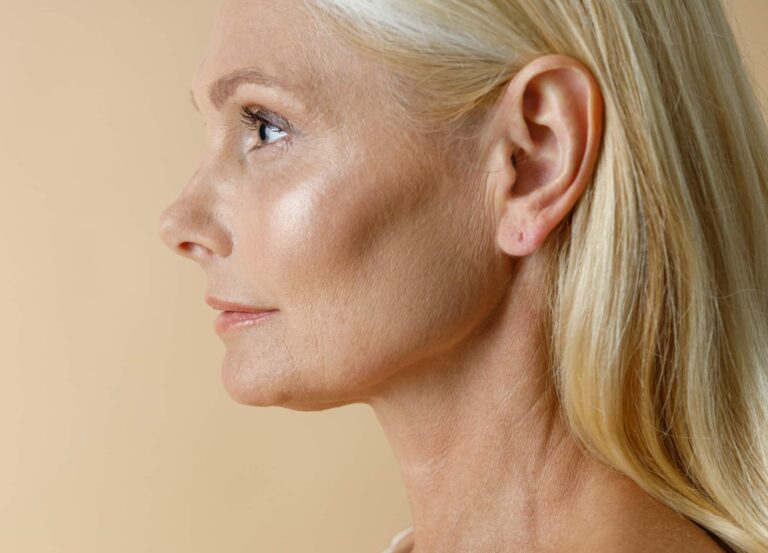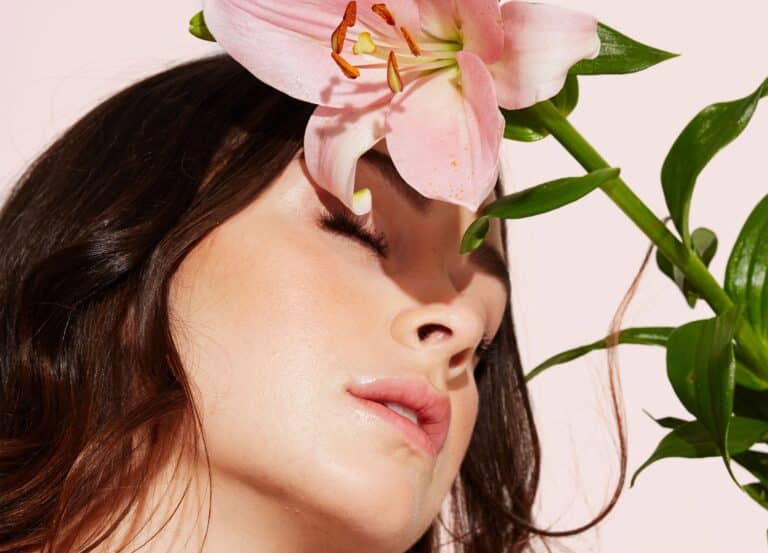At some point in your life (for us, it was yesterday!), you’ve probably looked in the mirror and fantasized about the idea of achieving long, luscious lashes without the labor of applying mascara, falsies or extensions. Thanks to the onslaught of eyelash growth serums, what was once just a dream has now become a reality.
Though there is currently only one FDA-approved prescription on the market (Latisse), there are more and more lash-growth products being sold over the counter every year. According to a 2018 market research study, the market for eyelash growth serums in the U.S. was valued at around $280 million and is growing at a rate of 5%, year over year.
For some of us, the desire to enhance our natural lashes is as innate as the desire to use injectables and skin rejuvenation tools. “Long, healthy-looking lashes make the eyes look full and make women feel beautiful and young,” New York City dermatologist Dr. Michele Green says. For others, it comes out of a genuine need to feel like themselves again. “Some women also want to look as they did before chemotherapy, and lash serums can help.”
How do eyelash growth serums work?
The main goal of these lash products is to counteract the body’s natural hair-shedding process, to help the tiny hairs grow longer. “Everyone is born with a predetermined number of hair follicles,” Dr. Green explains. “Each individual eyelash is programmed to grow to a certain length, then fall off. However, using products that contain [certain] ingredients can extend the [growth phase] of the hair follicle.”
A typical eyelash life cycle happens over the span of three stages.
- ANAGEN: The growth phase lasts from four to six weeks.
- CATAGEN: The follicles begin to shrink during this transition phase, which can last anywhere from two to three weeks.
- TELOGEN: The resting phase is when new strands begin to grow and old ones naturally fall off. It can take four to eight weeks for this final stage to occur, then the cycle begins again.
This is all to say: Lash growth is slow. Very very slow. In fact, the growth rate is much slower than that of the strands on your head. Latisse and other eyelash growth serums that contain prostaglandin analogs (which are basically lipids derived from fatty acids) work by “stimulating more eyelashes to be in the anagen cycle, and they prolong growth,” says Los Angeles dermatologic surgeon Dr. Anna Guanche. Those same types of serums, she adds, also help trigger the transition from the “inactive” final stage (telogen) to move more quickly back into anagen.
Beyond prostaglandins, some of the most common ingredients in these tubes are biotin, peptides, plant extracts and panthenol, though they typically just condition the lashes, thus making them stronger and healthier-looking.
Best practices and results
Eyelash growth serums are easy to use—at night, swipe a wand (or in the case of Latisse, a prepackaged, sterilized brush that you’ve added a drop of product to) right onto the skin closest to the lashes (the lash root), just like you would a liquid eyeliner, just once. Using more than the recommended application will not get you any faster results. Wait about two minutes to let the serum dry before going to bed.
Given that the lash growth cycle moves at a snail’s pace, it’s important for users to be patient. In most cases, with regular use, Dr. Green says, you can see results in as little as one month. For complete results, though, she advises to give it four to six months.
It’s also necessary to stay consistent with your application, if you want to maintain your new length and fullness. The makers of GrandeLASH-MD, for example, instruct users to “apply every other day for maintenance.” If you stop using the serum though, expect your lashes to return to their original state. “The eyelashes that fall out at a normal rate will grow back but will never reach the same length that was achieved while using a serum,” Dr. Guanche says.
In terms of interchangeability between eyelash growth serums and brow serums, Dr. Green says you can save yourself some money and buy one product for both areas. The only caveat: while a lash product is typically safe for brows, the opposite is not necessarily true. “It is not recommended vice versa, since the eyes are so sensitive—it can cause adverse effects,” she says.
Safety factors and side effects
Like any other cosmetic product that is potentially altering your body’s natural development, there are pros and cons to weigh when deciding which one (if any) to use. Kelly Dobos, a cosmetic chemist in Cincinnati, urges consumers to “be cautious about ingredients” overall—especially the lash-growth-inducing prostaglandin analogue (typically labeled “isopropyl cloprostenate”), which is found in many of the OTC serums on our list below.
While it’s essentially a synthetic version of the same prostaglandin (bimatoprost) that’s included in Latisse, not all versions are created equal. Claims for Latisse, Dobos says, “have been substantiated through clinical testing in double-blind, randomized trials,” but the other products have basically bypassed these rigorous standards.
Side effects can occur, but Dr. Guanche reassures us that, for the most part, these are typically temporary and/or mild. “Studies have shown that Latisse and other eyelash growth serums containing prostaglandins can create a temporary redness around the lash line,” she says. Fortunately, she adds, this reaction goes away after discontinuing use of the product. “In addition, for a small set of people—specifically, with lighter eyes—there [can be] a permanent darkening of the iris to a deeper shade.” Even so, she insists, “this is exceedingly rare.”
The dermatologist also assures us it’s a myth that these serums can affect your vision. Ideally, the easiest way to avoid any potential irritating side effects is to always ensure the serum is applied on the lash line versus anywhere within the eye.
Related: 5 cosmetic treatments that save you time
In 2011, the FDA issued warnings to both the makers of NeuLash and RapidLash for not being upfront with consumers about its inclusion of isopropyl cloprostenate and its possible side effects. Similarly, in early 2018, a class-action lawsuit was filed against Rodan + Fields, the makers of Lash Boost, by a group of users who claimed that they weren’t warned about the side effects and suffered as a result. According to the complaint, alleged side effects included “change(s) in iris color, eyelid drooping, itchy eyes, eye/lid discoloration, eye sensitivity and vision impairment.”
In response to the lawsuit, R+F said in a statement that it had always marketed Lash Boost as a cosmetic and had been transparent about side effects all along. “Rodan + Fields provides clear directions to users, including those who experience irritations,” the company said.
If you scan any of Lash Boost’s marketing materials—including this very detailed FAQ doc—you’ll notice two things. First, warnings and potential adverse effects are indeed outlined. Second, the brand cleverly works around Latisse-adjacent claims that Lash Boost will literally help grow your lashes, by choosing to emphasize the “appearance” of fuller, longer, darker lashes. This way, the serum remains a cosmetic (versus a drug), thus ultimately falling outside the need for FDA protocols. As it stands today, isopropyl cloprostenate is still not officially considered a drug.
How to choose an eyelash growth serum
If you’re reading this article, we know that you’re likely as curious as we were about lash enhancers and how to choose the best one—and we agree that this is a confusing beauty category. Why go through the hassle of a prescription for Latisse when you can just add any of the others to your cart and have it delivered in less than two days? And what really makes one product more effective than another?
Let us help you cut through the noise, with our detailed guide to 10 of the most popular tubes available today.
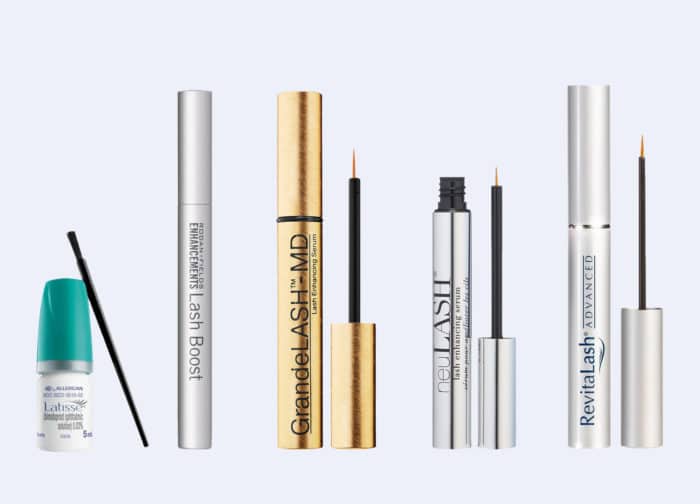
1. LATISSE
Cost: Starting around $120 for 3 mL (about a 30-day supply)
Latisse is the first and only FDA-approved prescription treatment for inadequate or not enough lashes (aka hypotrichosis), which means it’s clinically proven to increase growth. It’s also known to boost the thickness and darkness of lashes.
Its active ingredient, bimatoprost, was originally introduced in prescription eye drops for glaucoma called Lumigan. But after patients who were using it saw that their eyelashes grow longer and fuller, Allergan decided to capitalize on the discovery. “[The company] saw this was an amazing side effect and moved forward to get the indication for eyelash growth,” Dr. Guanche recalls.
With all the options today, this prescription-only version is still considered the gold standard. “For real, Latisse is the way to go,” Dobos says. “Many cosmetic serums do not contain proven active ingredients, so it’s not as likely they really do much.” Even Dr. Marc Grossman, a White Plains, New York, optometrist who is also a holistic eye doctor, believes Latisse to be worth its cost. “I have seen good results, with hardly any side effects, with Latisse.”
Related: 6 ways to make eyelash booster Latisse last longer — and save some cash
2. RODAN + FIELDS LASH BOOST
Cost: $155 for 5 mL (60-day supply)
The company’s best-selling Lash Boost contains a blend of biotin, panthenol, keratin and peptides, which work together to “moisturize, nourish and protect” the lashes. In particular, octapeptide-2 is a synthetic peptide that is “thought to promote hair growth from within the follicle,” Dobos says. Despite the aforementioned hubbub over the alleged lack of transparency about side effects, the lash-lengthening results have many consumers (who, we should add, are not all consultants) raving. “I have had some patients use Lash Boost and say that within two weeks they noticed the lashes starting to get longer,” Pennsylvania plastic surgeon Dr. Francis Johns told said in a Realself Q&A in 2018.
3. GRANDELASH-MD
Cost: Starting at $65 for 2,mL (90-day supply)
Dr. Guanche says that GrandeLASH-MD is her over-the-counter lash enhancer of choice. “It’s far superior to any other eyelash product I’ve used, besides prescription Latisse. In fact, I recommend it to my patients as well as the brow serum.” She points to that same buzzy ingredient—we’ve mentioned it a lot—prostaglandin (shown on the ingredient list as cloprostenol isopropyl ester), as doing most of the heavy lifting. It “actually helps lashes grow longer,” she says. In addition, a “proprietary blend” of vitamins, antioxidants and amino acids is included.
4. NEULASH
Cost: Starting at $95 for 3.2 mL (60- to 90-day supply)
Sodium hyaluronate—one of the leading ingredients on the neuLASH formula list—“acts as a conditioner to keep the eyelashes soft and less prone to breaking,” Dr. Guanche notes. The nutrient-rich complex also contains a proprietary mixture of peptides, proteins and vitamins, which the brand has dubbed Active Eyelash Technology. Besides Lash Boost, it’s also the only other product on our list that has pumpkin seed extract, a conditioning ingredient that has been shown to promote hair growth.
5. REVITALASH ADVANCED EYELASH CONDITIONER
Cost: Starting at $98 for 2 mL (90-day supply)
Originally developed by the late ophthalmologist Dr. Michael Brinkenhoff as a way to keep his wife feeling confident during her battle with breast cancer, Revitalash enhances lashes with natural lipids, peptides and panthenol-rich green tea extracts. According to Dobos, those herbal extracts do have their benefits—the green tea extract is intended to be “soothing” and the ginseng extract “stimulating,” she says—but, most of the time, are too diluted to be effective in cosmetic cocktails like RevitaLash. Still, Dr. Green refers to RevitaLash as an “industry favorite” because of its known effectiveness. Perhaps that can be somewhat attributed to the complex’s different-looking ingredient, “dechloro dihydroxy difluoro ethylcloprostenolamide”—which is, in fact, a prostaglandin analogue.
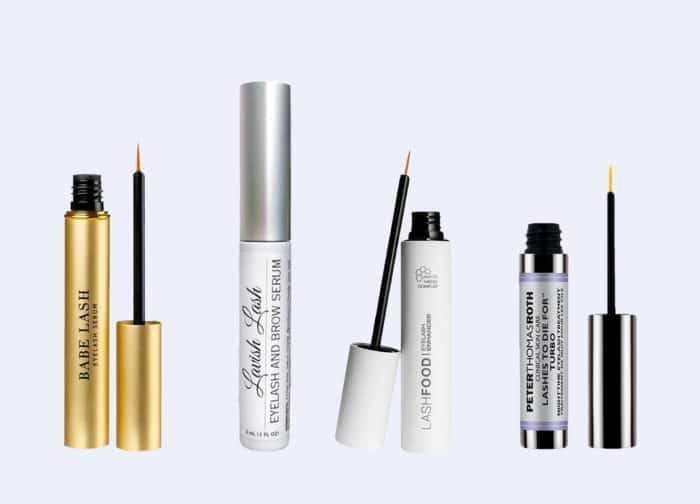
6. BABE LASH ESSENTIAL SERUM
Cost: $65 for 2 mL (90-day supply)
Besides biotin and peptides, panthenol serves as a key ingredient in the Babe Lash formula (it appears higher up on the label than it does on any other product listed here). “Panthenol is a derivative of vitamin B5 and is essential for healthy diet, skin and hair,” Dobos explains. “When it’s applied to hair, it takes on a provitamin form, converting to pantothenic acid—which can penetrate your hair or lash fiber, conditioning it and maybe contributing to a thicker look and feel.”
7. LAVISH LASH
Cost: $30 for 3 mL (90-day supply)
With 13,000+ rave customer reviews—80% of which are 5-star—Lavish Lash is currently sitting in the No. 1 spot in the Lash Enhancers and Primers category on Amazon. “With Lavish Lash, I am getting the same results [as Rodan + Fields Lash Boost], for a fraction of the cost. I have tried a whole bunch of different ones, and this is by far the most bang for the buck!“ says one reviewer. “I’ve been using it for 2 months now, and OMG…it’s legit. I look like I wear fake eyelashes, and I LOVE it!” notes another.
Why so much hype? Besides the inexpensive cost and the inclusion of conditioning ingredients (think: biotin and ginseng extract), it’s the peptides, according to Dobos. Describing them as “signaling molecules,” she says that the peptides in this bottle have been shown to encourage hair growth and the formation of keratin, which would ultimately help strengthen the lashes.
8. LASHFOOD PHYTO-MEDIC EYELASH ENHANCER SERUM
Cost: Starting at $78 for 3 mL (90-day supply)
The LASHFOOD Eyelash Serum is a 99.49% natural and vegan formula. It’s the only product of its kind that’s been given an Ecocert label—meaning it’s been certified as plant-based and organic and contains no parabens, synthetic dyes or synthetic alcohol. It’s also free of prostaglandins, silicones, gluten, phenoxyethanol, petrochemicals or mineral oils.
Inside the tube is a blend of herbal extracts, aloe, amino acids, lavender water and soy protein. These ingredients may be able to nourish lashes, to make them look longer and thicker, but Dr. Guanche says that without prostaglandins, it’s typically only a superficial effect. “Most of the other ingredients condition the lashes, thus making them appear healthier,” she explains. “But usually those other ingredients won’t do the actual trick of growing them.”
9. PETER THOMAS ROTH LASHES TO DIE FOR TURBO
Cost: $85 for 4.7 mL (60-day supply)
Similar to the LASHFOOD formula—yet not as “natural”—the Peter Thomas Roth Lashes To Die For Turbo is free of prostaglandins. Instead, a peptide component, called the Tri-Phase Lash Complex, is promoted as the workhorse. Myristoyl pentapeptide-17, in particular, is being touted by websites like INCI Decoder for its ability to “increase eyelash length,” but there are no official scientific studies published about it at this time.
10. CASTOR OIL
Cost: varies
Search “DIY lash-growth serum” on YouTube, and you’ll find hundreds of videos praising the “crazy results” from the application of plain old castor oil. Sure, it has some benefits—Dobos says that because it’s emollient, it may provide some conditioning and prevent breakage—but in terms of boosting lashes, that’s never been clinically proven. ”It’s just a total myth that it enhances lash growth,” asserts the cosmetic chemist. Dr. Green agrees: “Though it is a popular belief and people swear by it, there are no scientific studies to support castor oil and lash growth. However, castor oil contains 90 percent ricinoleic acid—a chemical compound that may help reverse hair loss.”






